3D games are any games with solid three-dimensional pieces we can manipulate. In many ways, they resemble toys.
Popular 3D Games
- Domino
- Rummy
- Jenga
- Bed Bugs
- Connect 4
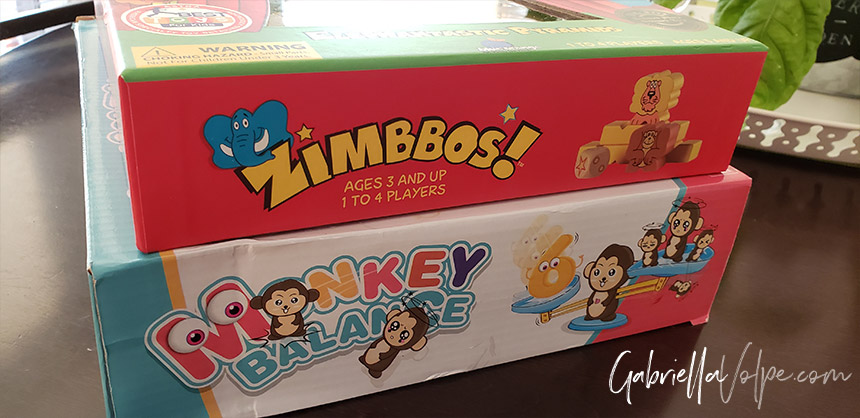
Modern-day 3D Games: Zimbos! and Monkey Balance
3D Game Challenges for Neurodivergent and Disabled Children
- Complex rules may be difficult to follow
- Overwhelming amount of pieces and tasks/strategies
- Challenging to manage loose pieces
- Frustrating to balance stackable pieces
- Picking up 3D parts may be tricky
Skill-Building with 3D Games
3D games build:
- Fine motor skills/dexterity
- Spatial sense
- Eye-hand coordination
- Problem-solving and reasoning
- Balance, weight, and measurement
- Estimation
- Vocabulary
- Taking turns
- Cooperation
Suggestions for Adapting 3D Games
Find junior versions of popular games. Domino is a popular 3D-type game. This game is great to start with because of the size of the tiles, colors, and indentations. If traditional dots are too overwhelming for a first-time player, find junior versions of the game.
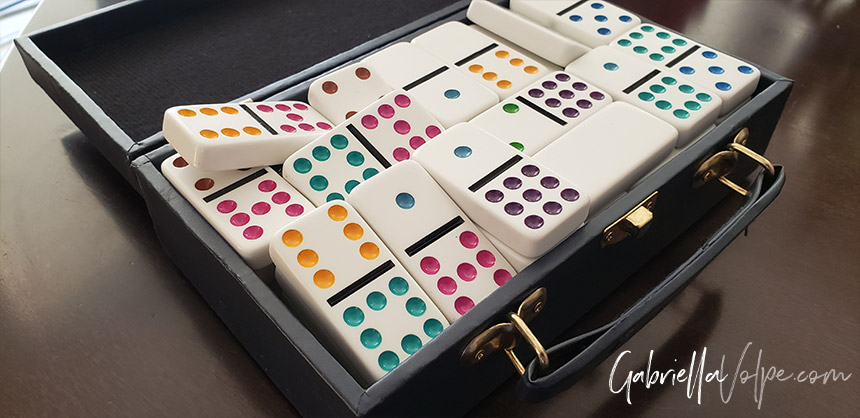
Domino is a popular 3D-type game. This game is great to start with because of the size of the tiles, colors, and indentations.
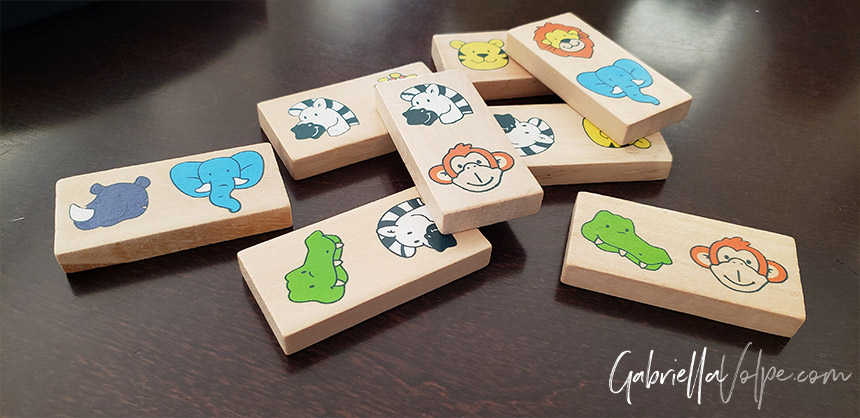
I found these at a dollar store. Instead of counting dots, players match animal faces.
Anchor the pieces. For some kids, loose 3D parts in an unstructured space might be difficult to manage. Create a mat to better anchor the tiles.
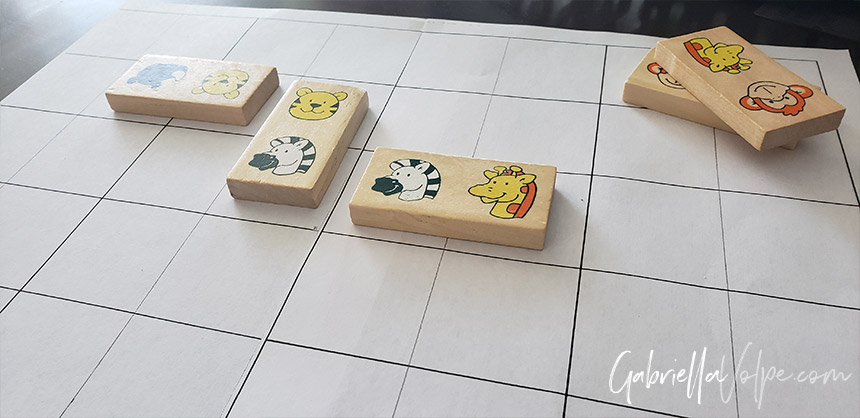
Adding loop and hook dots to laminated mats and wooden playing pieces helps to stabilize the pieces. Begin with matching two pieces at a time, then increase with practice.
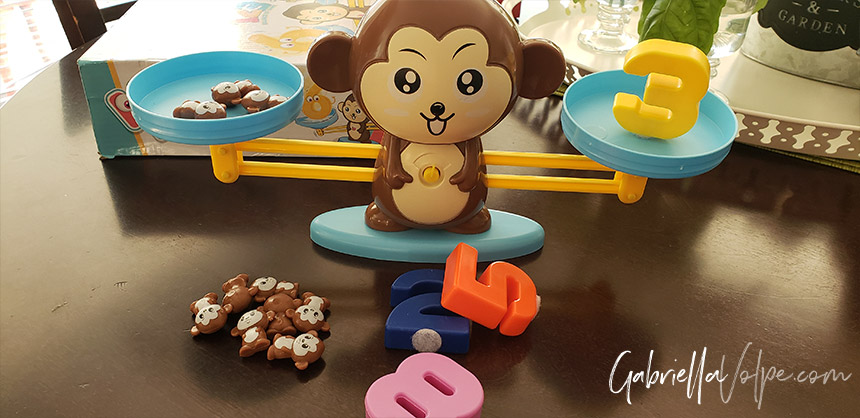
This Monkey Balance game can be frustrating (even for adults without fine motor challenges) to manipulate. The pieces easily topple over. I added loop and hooks on the trays and the bottom of each piece so they stand upright, adding another fine motor element to the game. The base is very light and also easily topples. Achor it with playdough.
Change the rules. Work up to playing traditional Domino by changing up the rules. For example, collect all the tiles of one top color or number.
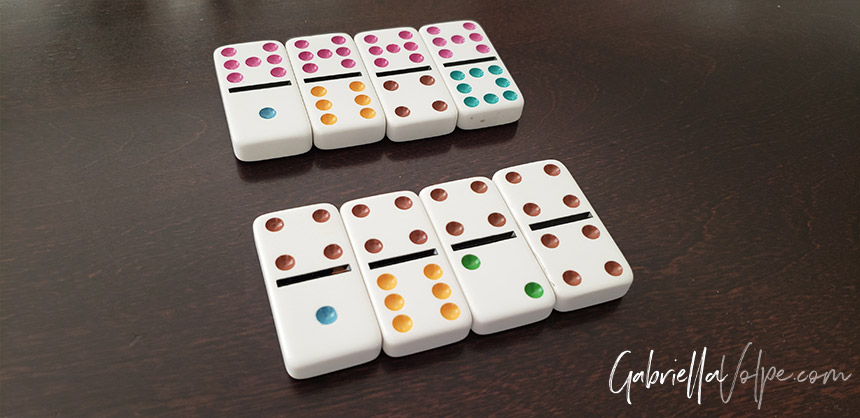
Domino tiles sorted by top color number. Alternatively, sort by bottom colors or numbers, etc.
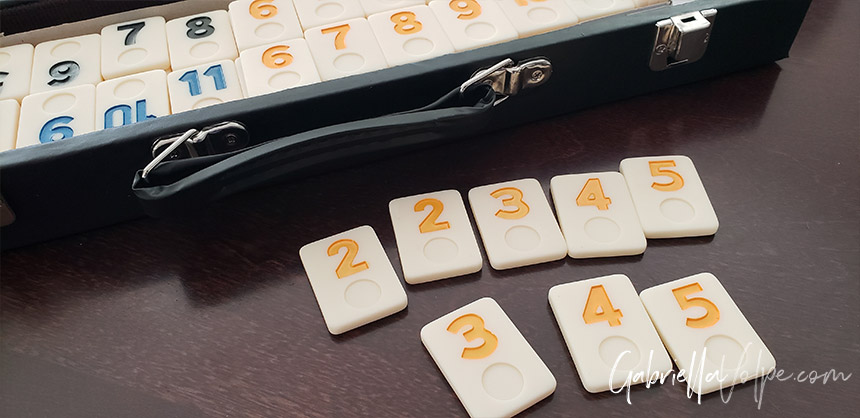
Similar to Domino tiles is the Rummy game tiles. This game has numerals carved on the tiles and an indented spot on the bottom, making sliding the tile across the table more accessible for some little hands. This is another game that lends itself to changing the rules so all players can participate. Some ideas for play: Match the numbers, sequence the numbers of any one color, match the colors, etc.
Stabilize 3D pieces. Adding loop and hook dots might be a good beginner option for hands that need additional support.
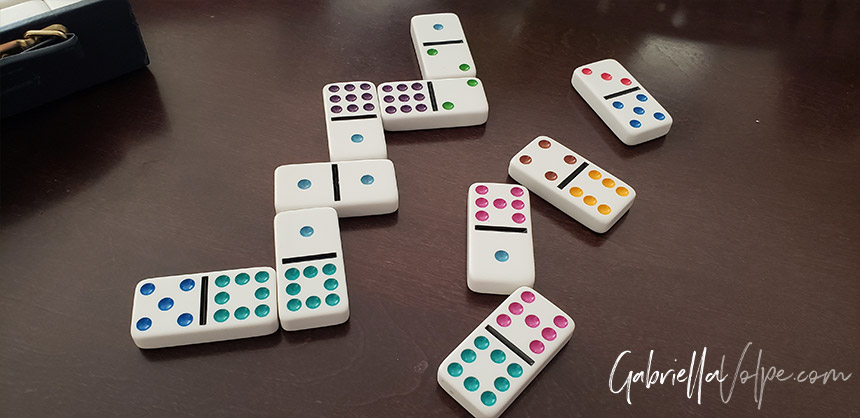
To stabilize the pieces on a smooth tabletop, use a non-slip shelf liner as a playing mat. Note: This image is not pictured with mat.
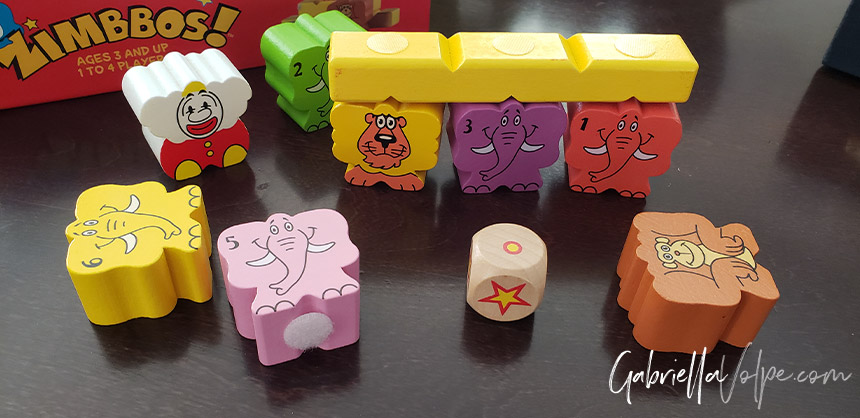
Zimbos! is a fun stacking and balancing game. Add loop and hook dots to the bottom of the pieces and the balancing bar to reduce disappointment when starting this game.
Use jumbo versions of the traditional game. Many games on the market also have enlarged versions of the originals. Good places to look are in a toy store’s early childhood catalogues/sections. Also, look for garden or pool games.
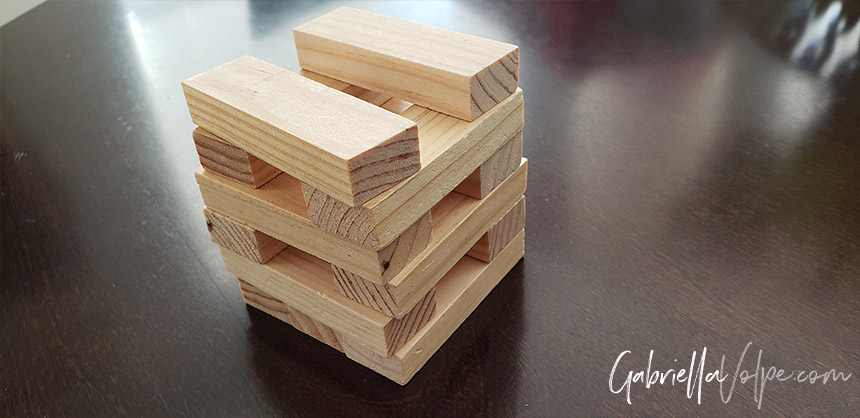
Jenga is another popular 3D game. You can find versions with larger blocks. If you have the traditional version, start with fewer blocks rather than playing the full-game version. Also, practice stacking the blocks differently and see how high the tower can go.
Offer tools for picking up playing parts. If picking up small 3D pieces with a pincer grasp is a challenge, find other ways to do that.
A few ideas:
- Use a scooper with a handle
- Use a spatula for rolling the playing piece into a plastic jar that can be held off the edge of the table by an adult
- The player can use their hand as a rake to scoop the pieces off a table into a bucket (as described above)
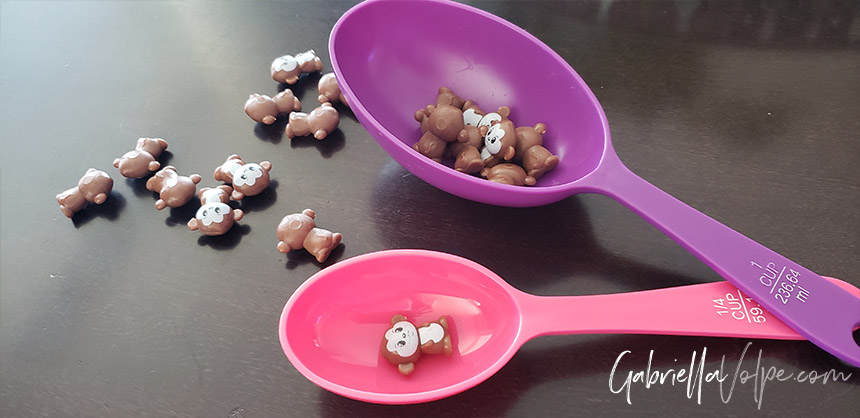
An oversized ladle can help some kids. Test out a variety of ladle sizes.
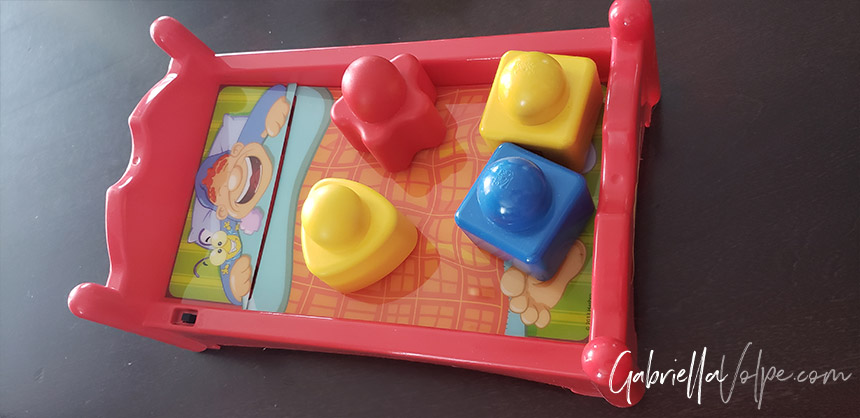
This Bed Bugs game comes with tiny plastic bug pieces and tweezers, which may be tricky for some children to grab as the bed jitters. Substitute small parts included in a game with larger, more manageable ones like these shape sorter pieces from another toy entirely. You can also use toy cars or small figurines or dolls. Now, the parts can be grabbed by bare hands, a scooper, or tongs. Work backwards towards smaller pieces and eventually to the original game pieces as fine motor skills develop.
Is there a game you’d like to adapt? Learn how I can support you here.
Related Articles

Adapting Board Games Video Series
Learn how to create inclusive play experiences for neurodivergent or disabled learners.

0 Comments